Common Pet Birds in the USA: Your Complete Guide
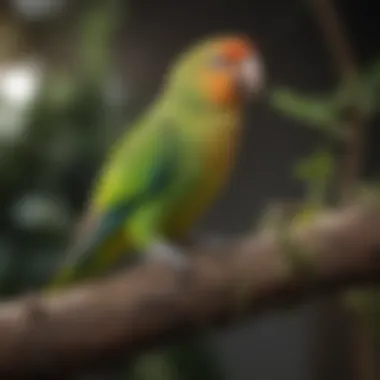
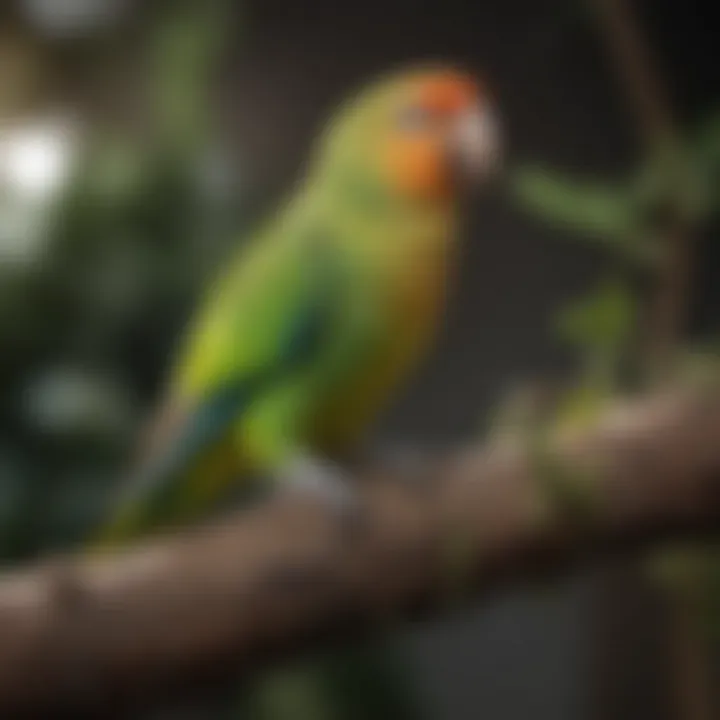
Intro
The allure of pet birds captivates many across the United States. From canaries to cockatiels, the diversity among pet bird species serves to enrich homes and lives. As companions, these birds offer unique personalities, colors, and sounds that can brighten any day. Understanding their needs is crucial for fostering a healthy and happy avian environment. This guide equips you with the necessary knowledge to care for these species effectively.
Care Tips
Caring for pet birds involves daily attention and keen observation. An optimized routine maintains their wellbeing and happiness.
Daily Care Routines
Birds thrive on consistent care. Here are critical routines to incorporate:
- Feeding: Fresh fruits, vegetables, and high-quality seeds are vital. Replace food daily to ensure freshness.
- Water: Always provide clean, fresh water. Change it daily to prevent contamination.
- Social Interaction: Birds need companionship. Spend time talking and engaging with them.
Cage Setup and Maintenance
A well-crafted cage provides comfort and security. Consider these aspects:
- Size: Choose cages that allow plenty of room for movement and play. A larger space helps prevent boredom.
- Positioning: Next to family activity areas can enhance socialization.
- Accessories: Include perches of varying sizes and materials to support foot health.
Hygiene and Cleaning Practices
Maintaining a clean environment is paramount. Regularly clean:
- Cage: Daily spot clean and weekly deep clean should be common practice.
- Toys: Check toys for wear and clean them carefully to prevent diseases.
Seasonal Care Adjustments
Seasons impact your bird's exposure to elements.
- Heat and Ac: Provide shade and appropriate temperature indoors during hot months.
- Cold: Ensure they are warm and draft-free during winters.
Behavioral Insights
Understanding bird behavior enhances the relationship you share with them.
Understanding Bird Body Language
Birds communicate through body language. Observe:
- Tail Movement: A fluffed tail might indicate relaxation, while rapid flapping shows agitation.
- Beak Position: An open beak can signal excitement or even aggression depending on context.
Common Behavioral Issues and Solutions
Behavioral problems can arise. Address them by involvement and attention. Typical issues to note include:
- Excessive screaming can stem from boredom, remedy with more toys.
- Feather plucking indicates stress; reviewing environmental factors is essential.
Positive Reinforcement Techniques
Using positive reinforcement nurtures relative learning. Implement:
- Treats for good behavior encourage a closeness between pet and owner.
- Consistent commands aids in understanding expectations.
Social Interaction Needs
Birds, especially social species, thrive on companionship.
- Engage with them at least one hour daily.
- A second bird can sometimes alleviate loneliness if two birds match in personality.
Nutrition Guides
The backbone of a bird’s health lies in worthwhile nutrition.
Essential Diet Components
Balance in diet ensures longevity. Birds should eat:
- High-quality seeds or pellets as a staple.
- Fresh vegetables and some fruits for variety and nutrients.
Safe and Toxic Foods
Certain foods are beneficial, while others can be harmful. Beware of:
- Safe: Apples, carrots, leafy greens.
- Toxic: Avocados, chocolate, and caffeine.
Supplements and Treats
Birds may need supplements for optimal health. Consider:
- Mineral blocks for calcium which supports bone density.
- Occasional nut blends as treats, ensuring moderation.
Feeding Strategies for Different Species
Due to variance among species, tailored diets are important. Conure, for instance, may relish formulations different than dachshunds that favor suicides sunflower seeds.
Wellness and Health
Routine health measures promote overall longevity.
Routine Health Checkups
Regular veterinary checkups are essential. Seek veterinary guidance routinely.
Identifying Symptoms of Illness
Stay vigilant for changes in behavior that can signal health issues, such as:* decrease in appetite or unusual lethargy.*
Preventative Care and Vaccinations
Prevent disease through proper vaccinations and unnecessary exposure to pathogens.
Mental and Emotional Well-being
Do not neglect bird's emotional state. Engage their minds through various activities; they require mental stimulation equally as physical.
Enriching Activities
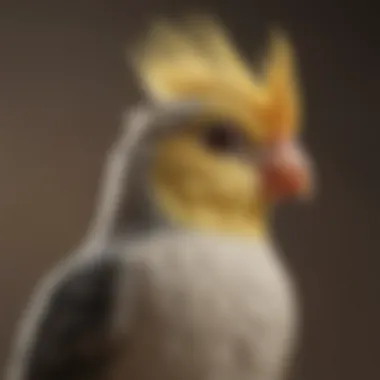
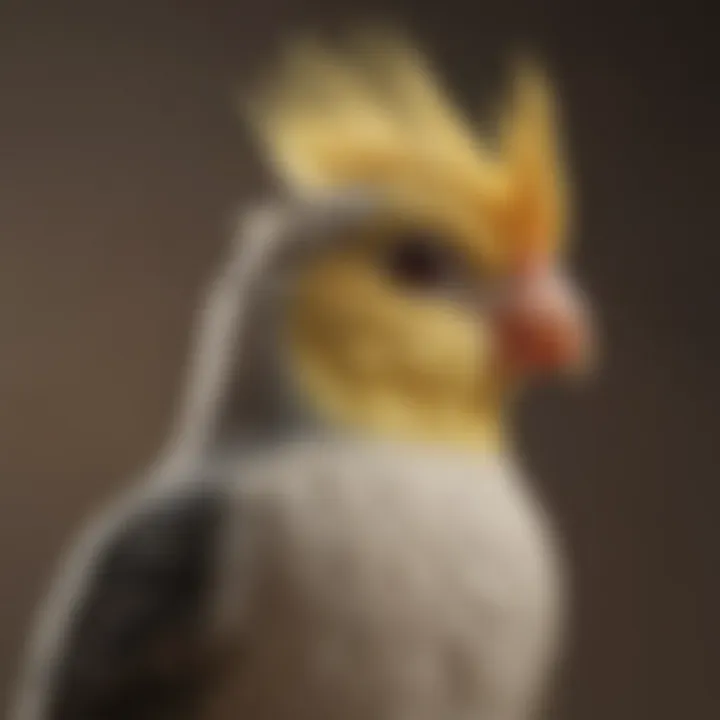
Keeping birds mentally active bolsters happiness.
Toys and Playtime Ideas
Incorporate engaging toys to lessen boredom. Rotate toys regularly.
Training and Tricks
Continual learning helps bond. Teach them named tricks slowly, ensuring patience during training sessions.
Outdoor Activities and Interaction
Supervised time outside benefits birds with fresh sights and sounds.
DIY Projects for Mental Stimulation
Create toys from household items to inspire creativity. A home-based project might emerge delight and purse healthy habits.
Creating a nurturing environment for your pet bird significantly improves overallapparnce and behavior. Invest attention, time, and forethought.
In essence, sustaining a bond with these amazing creatures begins with informed care. Explore pet bird varieties, ensure optimal setups, and engage regularly for past and future happiness. With this framework, avian companions flourish.
Overview of Common Pet Birds
Examining the realm of pet birds is not simply an exploration of species. It serves as a window into a unique interconnection between humans and avians. Birds are popular companions across the United States, reflecting not just the preferences of owners but also the broader societal inclination towards diversified pet ownership. This section will highlight the significance and relevance of having pet birds, offering insights into their welfare and well-being.
Popularity among Bird Owners
The popularity of pet birds in the USA has steadily increased in recent decades. They are not as common as dogs or cats, but they do have a dedicated following. A few species, such as parakeets and cockatiels, tend to top the lists when Americans consider buying pet birds.
Many factors contribute to the popularity of these feathered companions:
- Size and Adaptability: Smaller bird species can comfortably fit into various living situations, including apartments.
- Social and Engaging: Many birds display amusing and affectionate traits. They can bond well with humans and mimic sounds or speech, enhancing their interactive experience.
- Low Maintenance: Generally, pet birds have less stringent demands compared to more traditional pets like dogs. This quality may appeal to busy individuals or families.
- Diverse Looks: The colorful plumage of many birds captures the eye, making them aesthetically pleasing as household additions.
In terms of ownership trends, studies point toward a rising interest in avian pets among younger generations. Many pet owners seek companionship that aligns well with their active lifestyles.
Significance of Pet Birds in Society
Pet birds occupy a special niche within the socio-cultural context of pet ownership. Their presence extends beyond mere companionship. Statistically, millions of households in America engage in owning and caring for pet birds, which has broader implications for various aspects of society.
- Cultural Roles: In many cultures, birds are seen as symbols of freedom and expression. Their varied songs and behaviors contribute to their connectedness with human emotion.
- Therapeutic Benefits: Studies suggest that interaction with pet birds can provide therapeutic advantages for owners. Their cheerful chirps and vibrant activity can alleviate stress and enhance mood.
- Environmental Awareness: Bird ownership often encourages positive environmental attitudes. An increase in interest in birds may lead to greater valuation of wildlife conservation efforts.
Educating the public about proper bird care plays a role in fostering stronger relationships between humans and wildlife.
Every bird implies a rich story waiting to unfold. By understanding their needs and personalities, bird owners can ensure fulfilling lives for their companions.
In summary, the overview of common pet birds in the USA is essential for anyone looking to delve into the fascinating bond between humans and birds. This appreciation and knowledge pave the way for responsible bird ownership and a deeper societal understanding of their roles.
Parakeets
Parakeets are among the most popular pet birds in the United States. Their small size, colorful feathers, and amiable temperament make them appealing to many bird enthusiasts. They are easy to care for and have the potential for friendly interaction, making them a perfect choice for families and individuals alike.
Fostering a partnership with a parakeet enhances the overall experience of bird ownership. They often bring joy through their playful behavior and ability for vocal mimicry. This section will explore essential aspects of parakeets, offering insights into their characteristics, comprehensive care, and social behavior, all crucial for potential and current owners.
Characteristics of Parakeets
Parakeets, particularly the budgerigar, are known for their vibrant coloring and engaging personalities. They commonly exhibit feathers in greens, yellows, blues, and whites, creating a striking visual appeal. They can be small, around 7 inches long, yet their presence is anything but diminutive due to their playful spirits.
The beak of a parakeet is designed for seed cracking, and they typically have a smooth, contrasting hue across their bodies. His dynamic movements and playful aerials demonstrate their energetic nature.
Parakeets are social creatures known for their mild disposition and intelligent behavior.
Their intelligence encourages active training sessions and interaction, allowing these birds to learn tricks and mimic sounds. Owning a parakeet often leads to bonds that can provide companionship and entertainment.
Care and Maintenance
Caring for parakeets involves multiple aspects. Proper nutrition is paramount, as they primarily thrive on a mix of high-quality seeds, pelleted food, and fresh vegetables. Regular access to clean water is also needed to keep the bird hydrated and healthy.
When it comes to housing, a spacious cage enriched with perches, toys, and safe climbing surfaces offers an engaging environment for a parakeet. Here's a simple care checklist to follow:
- Cage Size: Should allow ample space for flight; recommended minimum is 18x18 inches.
- Diet: A balanced diet that includes vegetables, seeds, and pellets.
- Bathing: Provide misting or bathing options to keep feathers clean.
- Social Interactivity: Daily interaction with humans or fellow birds is key to socialization.
Regular health checkups with an avian vet can help prevent common health issues.
Social Behavior and Interaction
Parakeets thrive on social interaction. They form strong bonds with their owners and can become very affectionate. Engaging them often through talking or gentle handling is important as it fosters trust. Parakeets may also display playful behavior, including bouncing, chirping, and exploring their surroundings.
If you are considering adding more than one parakeet to your home, this can be beneficial, as these birds often feel more comfortable in pairs or small groups. However, every owner should consider individual personalities when introducing birds. This upfront understanding can help create a harmonious living situation, benefiting all pets involved.
Investing time and effort to understand and bond with parakeets will lead to a fulfilling relationship that enriches both owner and bird.
Cockatiels
Cockatiels are a significant presence among pet birds in the United States. Their amiable demeanor, coupled with their vocal abilities, makes them appealing to both new and experienced bird owners. Cockatiels possess traits that not only charm owners but also encourage engagement, providing a bond that is rewarding. Understanding different aspects of cockatiel care is essential to ensuring they lead a happy and healthy life in captivity.
Understanding Cockatiel Behavior
Cockatiels exhibit unique behavioral patterns that pet owners should be aware of. These birds are generally friendly and affectionate. They can show attachment to their human caregivers, interacting through head bobbing or singing.
Socialization is important. Cockatiels that are not stimulated or socialized may develop bad habits, like excessive screaming. Engaging them regularly is beneficial for their mood and overall happiness. Attention consists of gentle communication and time outside the cage when it is safe. Occasionally they may display territorial behaviors, especially triggered by new flock members within their reach.
Dietary Needs
Like all avian species, the cockatiel's diet is crucial for its well-being. A balanced diet consists primarily of high-quality pellets, supplemented with seeds. Fresh fruits and vegetables should also be given.
Key dietary points include:
- Pellets: About 60% of their diet. These provide essential nutrients.
- Seeds: Offering a limited amount helps with enjoyment; however, it should not form the main part of their nutrition.
- Fruits and Veggies: Foods like apples, carrots, or leafy greens add variety. Always ensure these are safe for pet birds. Check resources such as wikipedia for lists of safe foods.
Water must always be fresh and changed daily. Keep an eye out for changes in their eating behavior, as any shifts could indicate health issues.
Housing Requirements
Creating the right environment for cockatiels is crucial. A spacious cage is important, both for comfort and for allowing them to move about freely. Ideally, the cage should allow them to stretch their wings. Taller cages are preferred. Adding them appropriate materials gives them opportunities for play and exploration.
Considerations for cage setup:
- Cage Size: Minimum dimensions should be 24” x 20” for a single bird but larger is better.
- Bar Spacing: Around ½ inch to ensure they can't escape but wide enough not to trap their heads.
- Bedding and Perches: Use natural perches made from untreated wood, which can help keep toenails trimmed.
- Toxic Materials: Avoid cage materials that can be reactive to birds, like certain metals which can be harmful.
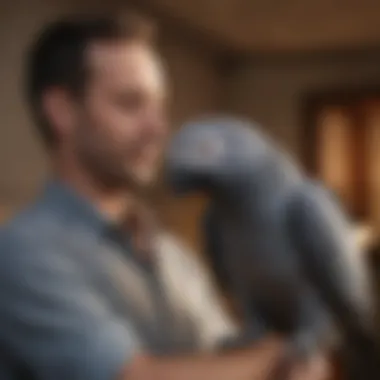
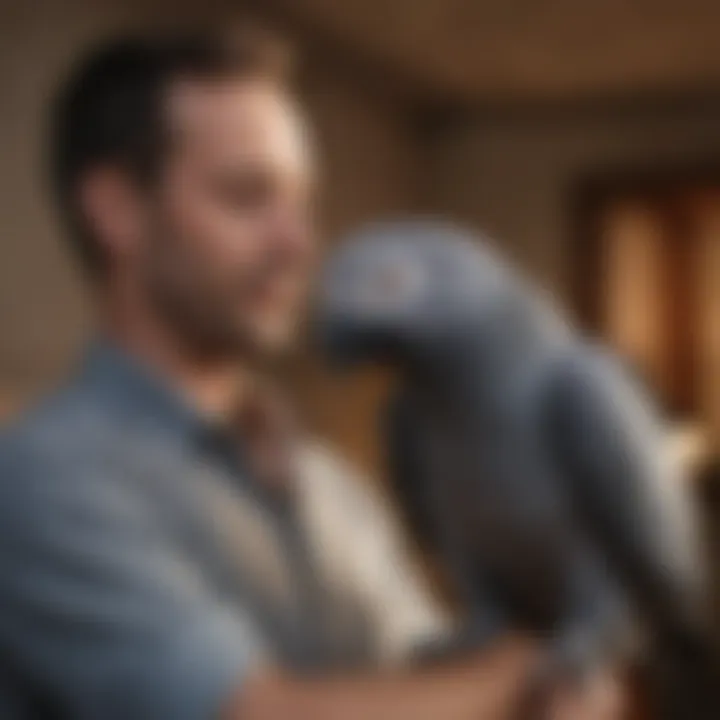
A mindful environment greatly reduces stress for cockatiels. A comfortable, safe habitat contributes significantly to their mental and physical health.
Overall, acknowledging competitive elements in cockatiel care will serve new and aspiring bird owners well, fostering an enriching companionship.
Canaries
Canaries are among the most beloved pet birds in the United States due to their vibrant colors and melodious songs. They have captivated bird enthusiasts for centuries. Understanding the distinct characteristics, historical significance, care requirements, and their unique ways of communication can enhance the experience of having these birds as companions. Here is an in-depth exploration of canaries that will benefit pet bird owners and aspiring bird parents alike.
History and Origin
The canary, specifically the yellow canary, belongs to the Finch family and is native to the Canary Islands, Madeira, and Azores. This small bird made its way into many households in Western Europe by the 18th century, primarily due to their beautiful singing ability and striking colors. Breeders took advantage of this popularity to produce various breeds with different colors and patterns. Often associated with coal mines, canaries were historically used as a safety device – miners would take them underground to detect harmful gases. A bird's distress signal would warn workers of danger, making them more than just pets, but also a part of safety measures. Today, canaries can thrive easily in domestic environments.
Care Guidelines
Caring for canaries requires attention to several key factors. First, providing a proper cage with enough space for them to move around is crucial. A cage measuring at least 18 by 24 inches can accommodate one or two birds. Ensure the cage includes horizontal bars or perches that allow for climbing.
- Diet: Canaries primarily eat a seed-based diet, but you should supplement it with fresh fruits and vegetables. Foods like kale, broccoli, and apples are excellent choices. Avoid giving them avocado, which is toxic to birds.
- Water: Provide clean, fresh water daily. Using a water bottle is often a cleaner option.
- Bathing: Canaries enjoy baths. A shallow dish or a spray bottle can facilitate bathing, promoting good feather condition and overall health.
- Social Interaction: They are not overly demanding but require some social interactions. If kept alone, they may start to become lonely or overly vocal.
Vocalization and Communication
Canaries are famed for their song, which varies significantly among different breeds. Males are generally more vocal than females and will often sing to attract mates. Their songs serve various functions:
- Mate Attraction: Males often sing during breeding season to attract females.
- Territorial Declaration: Vocalization can signify dominance, especially in the presence of other males.
- Communication with Humans: While canaries may not mimic speech like parrots, they communicate with humans uniquely. Bird owner interactions can influence their singing habits; birds who receive plenty of attention often perform better.
Understanding the nature of canaries helps breed confidence in pet ownership. Regular care and attention to their needs, alongside basic historical knowledge, create an enriching experience for both the owner and the canary.
"Canaries not only provide company; their songs enrich our lives."
Finches
Finches are increasingly recognized as versatile and vibrant companions for many bird enthusiasts. Their soft songs and lively personalities make them a popular choice among pet bird owners. However, understanding their specific needs and characteristics is vital for their welfare. From socialization to habitat, housing, and nutrition, finches present a unique set of considerations that every bird owner should take into account. Each of these aspects not only enhances the finch's life but also strengthens the emotional bond between the bird and its owner.
Species Variability
Finches encompass a wide range of species, each offering distinct traits and personalities. Popular species include the Zebra Finch, the Society Finch, and the Gouldian Finch. Each type can bring its own beauty and charm. For example, Zebra Finches are known for their adaptive nature and simplicity in care, while the colorful Gouldian Finch is appreciated for its vibrant plumage. Understanding these variations means acknowledging individual needs which may not always align across the species. Transitioning pet owners should be thorough in researching specific species, as differing characteristics can drastically affect care routines.
Feeding and Nutrition
Providing finches with a balanced diet is paramount. A typical diet includes high-quality seed mixes tailored for finches, fresh fruits, and vegetables. Varieties like millet, canary seed, and plantains are generally well accepted and can help in maintaining their feather quality and overall health. Additionally, incorporating protein treats such as mealworms or egg food enhances their diet during breeding periods.
Avoid reliant heavy diets on seeds, as excessive fat can arise, promoting obesity which negatively affects overall well-being. Getting accustomed to introducing new foods gradually often encourages finches to diversify their intake. Rich nutrition will support vibrant colors on their feathers and energize their spirited behaviors.
Cage and Habitat Setup
The cage size and environment play critical roles in a finch’s life. It is essential to provide a cage that is spacious and ensures comfort for your finches. A minimum cage size of 30 inches in length is advisable for even a small group as they tend to be sociable. The enclosure should also feature horizontal bars, which encourage climbing and provide exercise opportunities.
Inside the cage, include perches of varied diameter to help maintain foot health. Additionally, keeping cleaning supplies on hand is important since finches can create a mess, both from uneaten seeds and droppings. For proper mental stimulation, consider adding toys like swings and ladders. Offering an enriching habitat causes stress reduction, leading to happier and more active finches.
In summary, understanding the individual needs of finches optimizes their care and increases their social potential for companionship.
Lovebirds
Lovebirds are often regarded as one of the most charming companion birds for pet owners. Their vibrant colors, affectionate nature, and lively personalities contribute to their appeal. These small parrots are renowned for their bonding behavior, both with their human caregivers and amongst themselves. Understanding lovebirds and their needs is crucial, as they possess unique characteristics and have specific care requirements that set them apart from other pet birds.
Understanding Their Temperament
Lovebirds exhibit playful and social behavior, but their temperament can vary significantly among individuals. Generally, these birds are very active and enjoy interaction. They often engage in playful activities, including climbing and exploring, which makes them particularly entertaining to observe. However, it is also important to recognize that their strong social nature means they can develop attachment issues if isolated for long periods.
Additionally, lovebirds can become territorial, especially if they feel threatened or are not accustomed to many human boundaries around their space. Their temperament requires attention from their owners to foster a balanced demeanor. Patience and consistent, positive reinforcement go a long way in building trust and reducing potential aggressive episodes within their behavior.
Pairs or Singles: What to Choose
Deciding whether to have a lovebird as a single pet or to acquire a pair depends on several factors, including the owner’s lifestyle and willingness to provide social interaction. Here are some considerations:
- Single Lovebird: If you choose to have just one lovebird, engage in daily interactions to fulfill the bird’s social needs. They require more attention from their human family members, otherwise they could become lonely or stressed.
- Pairs: Many pet owners opt to keep lovebirds in pairs to allow them to bond with each other. Socializing in pairs can lead to a more balanced bird, with less potential for loneliness. However, be aware that couples may tend to focus on each other instead of interacting with humans, which could reduce your personal bond.
Ultimately, the decision balances your lifestyle and the individual needs of the birds you intend to house.
Health Considerations
Maintaining the health of lovebirds entails routine care and monitoring for any signs of illness. Lovebirds, like all pet birds, are susceptible to various health issues that could harm their well-being.
Some common health issues include:
- Respiratory infections
- Feather plucking and other behavioral disorders
- Nutritional deficiencies from improper diets
Regular veterinary check-ups are essential for early detection and intervention. Additionally, provide a balanced diet that includes a variety of fresh fruits, vegetables, and a quality pellet feed specific for pet birds. Clean and safe housing conditions also contribute significantly to their health.
African Grey Parrots
African Grey parrots are well-known for their exceptional intelligence and unique capabilities. They hold a prominent position within the category of pet birds, both for their remarkable communicative abilities and their distinct personalities. This segment emphasizes the essential elements of African Grey parrots that are imperative for current and potential bird owners to understand. Including their neural capacities and highlighting methods for providing optimal care helps to cultivate a satisfying environment where these birds can thrive.
Intelligence and Learning Capabilities
African Grey parrots are often labeled as one of the most intelligent avian species. Their capacity for learning and mimicking human speech is unsurpassed. Studies show that these birds can manage over a hundred words, and some instances reveal that they have used speech to communicate their needs or emotions. Their cognitive abilities are not restricted to mimicry; they can solve various puzzles and demonstrate understanding of complex tasks. This contributes not only to their adaptability but enhances the bond between them and their human companions.
Key Aspects of Intelligence:
- Problem-solving skills: African Greys exhibit advanced problem-solving capabilities, making them engage and enjoy interactive toys.
- Use of vocabulary: They can learn words and phrases, often associating them with specific actions or items in their environment.
- Social intelligence: Their natural instincts help them recognize human emotions and respond accordingly.
Therefore, stimulating their intellect is essential for their overall wellbeing.
Environmental Enrichment
Environmental enrichment is crucial for African Grey parrots. These charismatic birds require an engaging and interactive space to satisfy their intellectual needs. Without proper stimulation, they may develop boredom, leading to destructive behaviors, such as feather plucking.
Effective Enrichment Strategies:
- Varied Toys: Providing a wide range of toys that appeal both mentally and physically is critical. Toys should promote problem-solving activities rather than mere physical exercise.
- Social Interactions: Regular interaction with their owners or other birds can provide them comfort as well as necessary socialization experiences.
- Challenging Tasks: Engaging in simple games or finishing puzzles tailored to their skills is beneficial to their mental health.
- Changing Environment: Altering the surroundings occasionally keeps their curiosity piqued and interactions vital.
Studies suggest African Grey parrots flourish in environments that promote mental challenges alongside social opportunities. Investing time in their environment leads to fulfilling pet-owner experiences.
Through effective environmental setup and cognitive challenges, African Grey owners can foster happier and healthier companions.
Macaws
Macaws are among the most stunning birds kept as pets in the United States. Their vibrant colors and striking appearances draw attention. As intelligent creatures, they offer companionship that few can understand. Understanding the unique characteristics of macaws, as well as their social behaviors and care needs, is essential for potential owners.
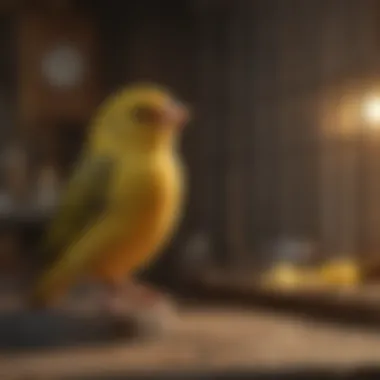
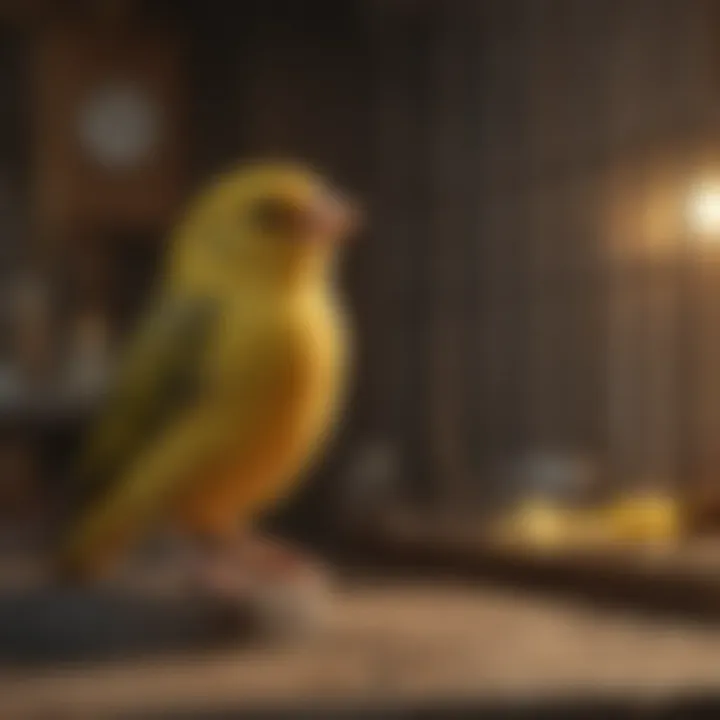
Unique Physical Traits
Macaws have distinct physical attributes. Their long tails contribute to swift flight and their strong beaks enable them to crack open very hard seeds. The feather palette ranges from bright blue to vivid yellow and deep green. Their remarkable physical capabilities make them stand out among pet birds, and it is this beauty that sometimes misunderstands their complex needs.
For example, adult macaws can measure up to 40 inches long. This significant size can create challenges in terms of habitat requirements. Moreover, their strength and dexterity mean they need toys that can withstand their beaking. Choosing accurate toys and equipment can prolong their happiness and health.
Social Structure and Interaction
Socialization is critical for macaws. In the wild, they live in flocks, which creates a rich social structure. This can make a difference in an owner’s situational approach. An isolated macaw may exhibit signs of boredom or depression. They are known to develop strong bonds with their owners, requiring daily interaction to thrive.
Research suggests that spending quality time with macaws improves their well-being. Engaging in social activities, providing companionship, and even designing flourishing environments can lead to a fulfilled pet. Macaws don’t just require food and space, they need emotionally rich lives.
“Birds have varying social structures. Understanding them helps create a better living environment.”
Care Demands and Challenges
Owning a macaw does not come without responsibilities. Their care demands are extensive. Macaws need more than proper food and a cage. A balanced diet includes nuts, seeds, fruits, and vegetables. Digestive needs are different from other species, thus requiring further consideration.
Additionally, macaws are prone to specific health issues. Conditions such as obesity can arise due to lack of exercise or improper diets. They often need consistent vet check-ups. Their size also leads to unique housing requirements; cages should be spacious enough to allow for natural behaviors such as flying and playing.
In summary, caring for a macaw is both rewarding and demanding. Potential macaw owners must do thorough research to ensure a mutual rewarding relationship built on care, interaction, and understanding of health. Responsible ownership can lead to a positive and enriching experience for both the bird and human.
Special Care Needs
Special care needs for pet birds are critical to their health and well-being. Understanding these aspects can significantly impact how owners interact with their birds and the quality of the birds' lives. It’s essential to be aware of the unique requirements of individual species, as well as common concerns that span the avian world. This section discusses major components of special care needed for pet birds.
Common Health Issues
Several health issues can affect pet birds, often depending on their species and environment. Awareness and proactive management can help prevent serious health problems. Some common conditions include:
- Feather plucking: Often the result of stress or boredom. This behavior requires immediate attention.
- Obesity: A significant issue that arises from improper diet or lack of exercise. Suitable dietary changes and enrichment can help maintain a healthy weight.
- Respiratory problems: Birds are sensitive to airborne irritants. Maintaining good ventilation and avoiding smoke or strong odors is crucial.
- Chlamydia psittaci infection: This bacterial infection is found in many pet birds. Regular veterinary check-ups can facilitate early diagnosis and treatment.
Regular examination by a veterinarian familiar with avian care is inportant. This provides peace of mind and an opportunity to catch any emerging issues early. Keeping informed through resources, such as avian health articles on Wikipedia or Britannica, supports owners in taking informed steps toward better care.
Behavioral Problems
Behavioral problems can significantly affect the relationship between a pet bird and its owner. Addressing these problems is a pivotal part of special care. Behavioral issues can arise due to:
- Loneliness: Many birds are social creatures. If left alone for too long, they may develop anxiety or destructive habits. Getting a companion bird or increasing interaction times can remedy this.
- Boredom: A lack of stimulation leads to poor behavior. Birds must have access to toys, puzzles, and other forms of engagement to meet their mental needs.
- Lack of structure: Birds rely on routine. Usually, they thrive with a consistent schedule for feeding, socializing, and sleeping. Deviations from routine may lead to stress.
- Bad habits: Talking to a bird calmly and redirecting negative behavior to more positive actions encourages better habits.
Positive reinforcement is an effective tool. Individualism is also significant when addressing behaviors, as each bird will act differently based on their unique personality. Future care is likely much more manageable when these behavioral aspects are prioritized. Providing a loving environment while being aware of problems can create a happier and healthier pet bird.
Maintaining a focus on special care needs ensures that pet birds remain vibrant companions, capable of enriching the lives of their owners.
Creating a Suitable Environment
Creating a suitable environment for pet birds is crucial for their well-being. It directly impacts their health, happiness, and overall behavior. A well-designed space helps mitigate stress, encourages natural behaviors, and allows birds to thrive in a domestic setting. Below, we discuss several vital aspects of forming this environment, paying attention to cage choices, environmental enrichment techniques, and necessary safety precautions.
Cage Selection
Choosing the right cage is one of the most fundamental steps. Birds need sufficient space to move, stretch their wings, and interact comfortably. Cage dimensions are important. Birds like parakeets require different space than larger birds like macaws.
Consider following guidelines when selecting:
- Dimensions: The cage should be at least twice the wingspan of the bird.
- Bar spacing: Bars should be spaced to prevent escape or injury; this varies by species.
- Material: Choose non-toxic metals that can withstand chewing.
- Shape: Avoid narrow, tall cages. Opt for wider cages that provide better floor space for movement and play.
A well-selected cage serves as a safe haven, allowing the bird to feel secure while also providing the space to explore.
Environmental Enrichment Techniques
Birds are intelligent animals; hence, environmental enrichment is essential to prevent boredom. When birds lack stimulation, they may develop problematic behaviors such as feather plucking or excessive screeching.
Several enrichment techniques are useful:
- Toys: Provide a variety of toys made from safe materials to encourage play and cognitive challenge.
- Perches: Use different perch types, including natural wood branches, to support foot health and provide varied landing options.
- Activities: Regularly rotate toys and introduce new ones to maintain their interest.
- Interaction: Daily interaction with owners can act as a source of stimulation, promoting a strong bond.
Engaging with these techniques creates a mentally stimulating environment that promotes health and well-being.
Safety Precautions
Safety cannot be overlooked when creating an environment for pet birds. The risks of hazards present in homes can be substantial. To minimize danger, follow specific safety guidelines:
- Avoid toxic plants: Common household plants such as philodendron can be harmful.
- Secure windows and doors: Ensure that they are closed when birds are flying. Stray birds can easily escape.
- Check electric wires: Birds often chew cords. Ensure they are covered or inaccessible.
- Limit regular household hazards: Items like non-stick pans can release toxic fumes when overheated.
Making these precautions essential ensures a safe environment for feathered friends, keeping them secure while they explore their surroundings.
"A well-maintained habitat is not just a luxury; it is a necessity that reflects the devoted care a bird receives from its owner."
Best Practices for Bird Care
Caring for pet birds goes beyond mere companionship. Adhering to best practices in bird care ensures their health, happiness, and longevity. This section emphasizes several critical aspects, including frequent veterinary checkups, proper grooming, and adhering to nutritional guidelines. Each of these elements contributes significantly to the overall well-being of avian companions.
Regular Veterinary Visits
Regular visits to an avian veterinarian enhance the quality of life for pet birds. These professional assessments offer insight into the bird's health status and help identify potential issues early on. Birds often mask symptoms of illness, so a routine check is crucial for preventive health care. It is recommended that pet birds see the vet at least once yearly; however, this schedule can change depending on age, species, and existing health conditions.
These exams typically include:
- Physical examinations: Evaluation of overall well-being and screening for abnormalities.
- Blood tests: These tests ascertain internal health indicators that are not visible externally.
- Weight monitoring: Weight fluctuations can signal health problems. Veterinarians track this closely.
Completing these visits is not only beneficial to the pet, as it keeps them healthy, but it also provides a sense of reassurance for the owners about the well-being of their feathered friends.
Grooming and Hygiene
Maintaining proper grooming and hygiene practices is paramount for keeping pet birds healthy. These practices help prevent diseases and other issues related to poor care. Basic grooming components include:
- Feather care: Regularly inspecting and preening birds to remove damaged feathers.
- Beak regimen: Monitoring beak growth since overgrowth may necessitate professional intervention.
- Nail trimming: As with other grooming, nail trims prevent discomfort leading to mobility issues for birds.
Having a clean living environment is vital. Birds can become susceptible to infections from leftover food or unclean cages. Thus, regular cleaning should include:
- Daily food and water changes: Fresh food and water eliminate bacterial growth and maintain hydration.
- Weekly deep sanitizing: Cage surfaces, perches, and toys must be cleaned on a weekly basis.
This comprehensive approach secures a safer and more comfortable habitat for pet birds. Prioritizing grooming and hygiene reflects the owner's commitment to their pet's well-being.
Nutritional Guidelines
Proper nutrition constitutes the foundation of a thriving pet bird. Individual dietary needs can vary based on species, but several universal guidelines apply. Main considerations should include:
- A balanced diet: A mix of high-quality pellets, seeds, and a variety of fresh fruits and vegetables should be a part of their meals. Pellets maximize nutritional content.
- Water intake: Hydroponics is critical. Clean, fresh water should always be available, aiding digestion and metabolism.
- Treats in moderation: While treats are acceptable, they should not account for more than 10% of a bird’s daily intake. Too many can lead to obesity and health problemas.
Each bird species usually functions well with specific dietary inclinations. For instance, parrots may require more diversity than finches, who might thrive on simpler dietary inputs. Consideration for specific needs tailors the owner's approach toward meeting their birds' expectations. Maintaining stringent nutritional practices fortifies the bond between bird and owner while fostering a healthier life for these pets.
Regular assessment of both food and behavioral changes can often lead to discovery of underlying health issues before they escalate.
Adhering to these best practices in bird care is fundamental in promoting the health and happiness of pet birds. With these components, owners can cultivate an environment that caters specifically to their avian companions' needs.















